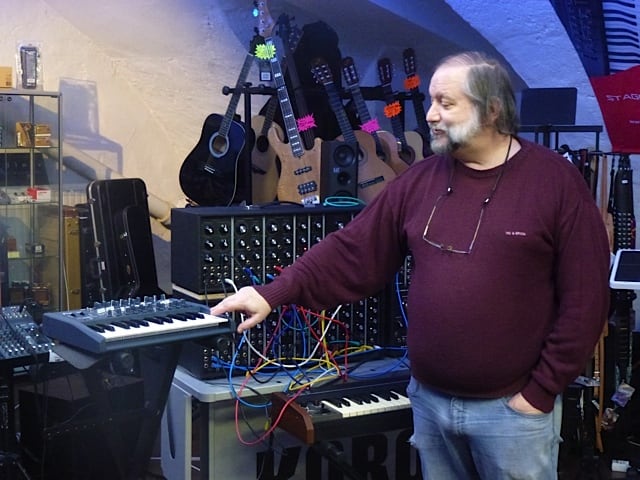YVES USSON Inside a modular mind
An interview with Yves Usson, synth mastermind,
and co-designer of Arturia’s MiniBrute
I’m what we can consider a “craftsman researcher”. Craftsman because designing electronic instruments is a hobby for me, while in my “day job” I’m a research scientist.
Usson is a humble, but incredibly talented and passionate man, and his expertise can be found in the architecture of some of Arturia’s flagship hardware synths. We had the pleasure of interviewing Yves, talking about how synths first inspired him, and how he carried his love of electronics and synthesis through to instruments that are enjoyed every day, all around the world.
The teenage engineer
What drives me is actually the discovery, when I was a teenager in the 70s, of the new sounds and first electronic music that could heard at the cinema, and on television and radio. They are sounds that immediately hooked and fascinated me.
From those first moments hearing sounds of “the future”, Usson knew he wanted to reproduce those sounds himself, and not just simply “play” his own. Combined with his passion and skill with electronics, the idea of actually making the musical instruments excited him.


When I actually started to get into this “hobby”, I was a high school student, or a student without means and this equipment, these musical instruments were totally unaffordable. To get an idea, the big modular system in my studio cost about the price of a house in the 1970s.
Like many other teenagers and students in the blossoming musical landscape of the 70s, Yves found a passion for amateur radio and hi-fi, which - for him - expanded into experimenting with electronics. He made his own receiver radios, his own amplifiers, and began to feel like the next logical step was to make his own synthesizer.
